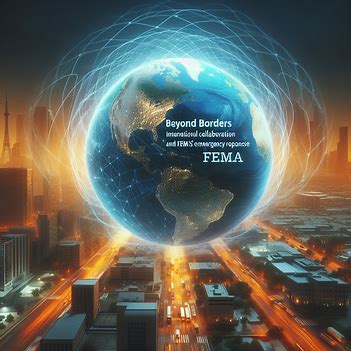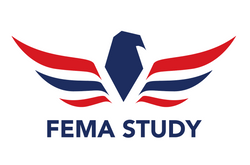
Beyond Borders: International Collaboration and the Global Impact of FEMA's Emergency Response Model
Introduction:
Natural disasters and emergencies know no boundaries, affecting communities worldwide. In the face of such crises, collaboration and coordination across borders are crucial for effective emergency response. The Federal Emergency Management Agency (FEMA) of the United States has developed a comprehensive emergency response model that has not only guided domestic efforts but has also had a significant global impact. This blog explores how FEMA's emergency response model transcends borders, fostering international collaboration and influencing emergency response efforts worldwide.
FEMA's Emergency Response Model:

FEMA's emergency response model is built on principles of preparedness, response, recovery, and mitigation. It encompasses a coordinated approach involving government agencies, non-governmental organizations (NGOs), private sector partners, and communities. Key components include risk assessment, proactive planning, resource allocation, coordination, and continuous improvement. This holistic approach has been refined through years of experience and has proven effective in managing a wide range of disasters and emergencies, from natural disasters like hurricanes and earthquakes to human-made crises such as terrorist attacks and pandemics.
International Collaboration and Assistance:

Recognizing the interconnected nature of disaster response, FEMA actively collaborates with international partners to share best practices, resources, and expertise. Through initiatives like the International Disaster Assistance Program (IDAP) and the International Emergency Management Coordination Group (IEMCG), FEMA facilitates mutual aid and assistance agreements with other countries, enabling rapid deployment of resources and personnel during emergencies. This spirit of collaboration extends beyond formal agreements to include training programs, joint exercises, and knowledge sharing platforms, strengthening global resilience and response capabilities.
Technical Assistance and Capacity Building:
FEMA provides technical assistance and capacity building support to countries around the world to enhance their emergency management capabilities. This includes training programs, workshops, and exchanges on topics such as disaster preparedness, response planning, risk assessment, and emergency communication. By sharing expertise and best practices, FEMA helps countries build resilient systems and institutional frameworks to better prepare for, respond to, and recover from disasters and emergencies.
Global Impact and Influence:

FEMA's emergency response model has had a profound global impact, influencing emergency management practices and policies in countries around the world. Many nations have adopted elements of FEMA's model, such as incident command systems, emergency operation centers, and disaster recovery frameworks, to improve their own emergency response capabilities. Additionally, FEMA's leadership in international forums and working groups has helped shape global agendas on disaster risk reduction, resilience building, and humanitarian assistance, amplifying its influence on the global stage.
Challenges and Opportunities:
While FEMA's international collaboration efforts have been instrumental in enhancing global resilience, challenges remain. Differences in governance structures, legal frameworks, cultural norms, and resource constraints can pose obstacles to effective collaboration and coordination. However, these challenges also present opportunities for innovation, learning, and partnership building. By embracing diversity, fostering mutual respect, and leveraging collective expertise, countries can overcome barriers to collaboration and work together more effectively to address common challenges and build a safer, more resilient world.
Conclusion:
FEMA's emergency response model transcends borders, fostering international collaboration and influencing emergency management practices worldwide. Through initiatives like international assistance programs, technical support, and capacity building efforts, FEMA helps countries build resilience, enhance response capabilities, and save lives in times of crisis. By continuing to promote collaboration, share knowledge, and strengthen partnerships, FEMA can further expand its global impact and contribute to a more resilient and secure world for all.
